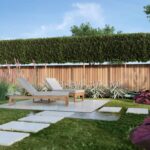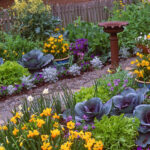Garden landscaping is an art form that involves designing and arranging the elements of a garden to create an aesthetically pleasing and functional outdoor space. The goal of garden landscaping is to enhance the natural beauty of the garden while also providing a space for relaxation, entertainment, and recreation. With careful planning and thoughtful design, a garden can be transformed into a beautiful and inviting oasis.
One of the key principles of garden landscaping is to create a sense of balance and harmony in the garden. This can be achieved by carefully choosing and arranging plants, trees, and other elements to create a visually appealing composition. The use of colors, textures, and shapes can also help to create a sense of unity and cohesion in the garden. By incorporating a variety of different elements, such as paths, walls, and water features, garden landscaping can create a unique and inviting space for both homeowners and visitors to enjoy.
Another important aspect of garden landscaping is functionality. A well-designed garden should not only be beautiful to look at, but also be practical and functional. This means taking into consideration the needs and preferences of the homeowner, as well as the climate and conditions of the garden site. For example, incorporating pathways and seating areas can make the garden more accessible and enjoyable to use, while choosing plants that are well-suited to the local climate can ensure that the garden remains healthy and vibrant year-round.
In addition to creating a beautiful and functional space, garden landscaping can also have a positive impact on the environment. By incorporating native plants, reducing water usage, and creating habitats for wildlife, garden landscaping can help to promote biodiversity and sustainability in the garden. This can not only enhance the beauty and health of the garden, but also contribute to the overall health of the ecosystem.
When planning a garden landscaping project, it is important to consider the overall design and layout of the garden, as well as the specific needs and preferences of the homeowner. By working closely with a professional landscaper or garden designer, homeowners can create a garden that reflects their personal style and taste, while also taking into account the practical considerations of the site. With careful planning and thoughtful design, garden landscaping can transform a dull and uninspired outdoor space into a vibrant and inviting oasis for relaxation and enjoyment.















